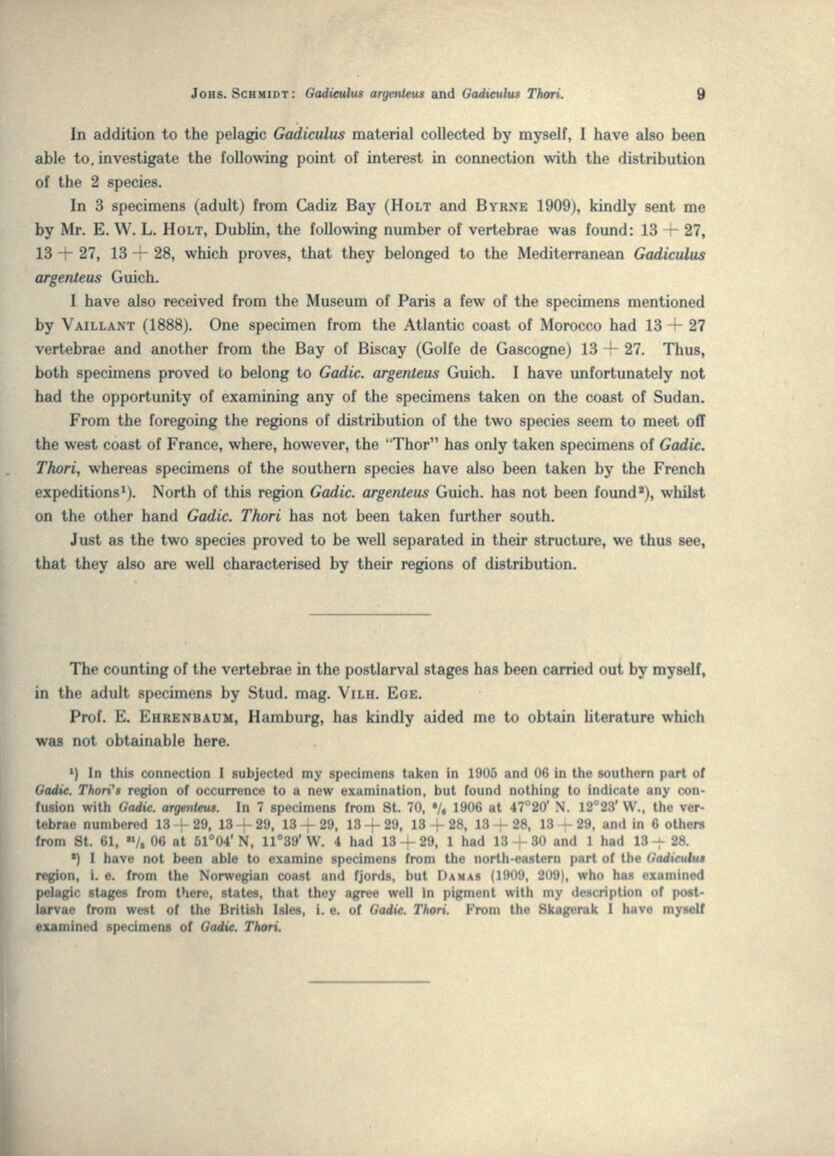
Full resolution (JPEG) - On this page / på denna sida - Gadiculus Argenteus and Gadiculus Thori

<< prev. page << föreg. sida << >> nästa sida >> next page >>
Below is the raw OCR text
from the above scanned image.
Do you see an error? Proofread the page now!
Här nedan syns maskintolkade texten från faksimilbilden ovan.
Ser du något fel? Korrekturläs sidan nu!
This page has been proofread at least once.
(diff)
(history)
Denna sida har korrekturlästs minst en gång.
(skillnad)
(historik)
In addition to the pelagic Gadiculus material collected by myself, I have also been
able to, investigate the following point of interest in connection with the distribution
of the 2 species.
In 3 specimens (adult) from Cadiz Bay (Holt and Byrne 1909), kindly sent me
by Mr. E. W. L. Holt, Dublin, the following number of vertebrae was found: 13 + 27,
13 + 27, 13 + 28, which proves, that they belonged to the Mediterranean Gadieulus
argenteus Guich.
I have also received from the Museum of Paris a few of the specimens mentioned
by Vaillant (1888). One specimen from the Atlantic coast of Morocco had 13 + 27
vertebrae and another from the Bay of Biscay (Golfe de Gascogne) 13 + 27. Thus,
both specimens proved to belong to Gadic. argenteus Guich. I have unfortunately not
had the opportunity of examining any of the specimens taken on the coast of Sudan.
From the foregoing the regions of distribution of the two species seem to meet off
the west coast of France, where, however, the “Thor” has only taken specimens of Gadic.
Thori, whereas specimens of the southern species have also been taken by the French
expeditions[1]. North of this region Gadic. argenteus Guich. has not been found[2], whilst
on the other hand Gadic. Thori has not been taken further south.
Just as the two species proved to be well separated in their structure, we thus see,
that they also are well characterised by their regions of distribution.
<< prev. page << föreg. sida << >> nästa sida >> next page >>